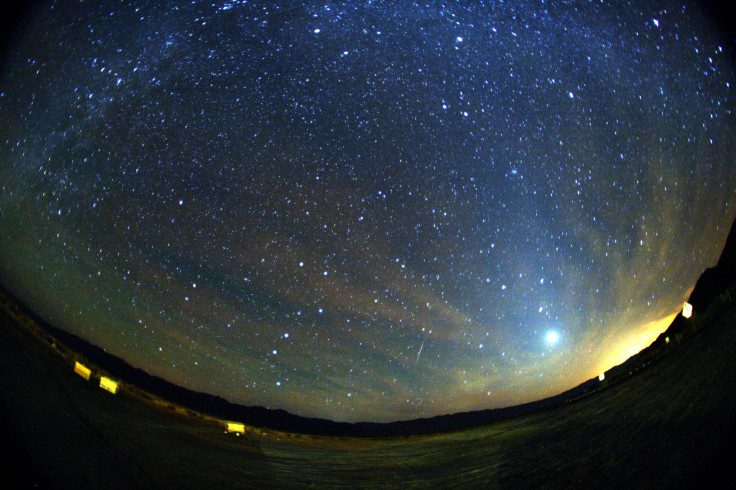Skywatching: Full Hunter's Moon, Orionid Meteor Shower Happening This Week
KEY POINTS
- The Hunter's Moon will reach peak illumination at 10:57 a.m. EDT
- It is known by several names including the Dying Grass Moon
- The Orionid meteor shower is also peaking this week
This week boasts a double sky event, with the full Hunter's Moon and the peak of the Orionid meteor shower.
The October full moon will reach peak illumination at 10:57 a.m. EDT Wednesday. Although the exact moment will happen during the day when most people probably won't catch a glimpse of it, the moon will actually appear full for about three days starting Monday. It means there's more than enough time for skywatchers to enjoy the sight.
This full moon is known as the Hunter's Moon because it is the first full moon after the Harvest Moon, the Old Farmer's Almanac explained. This year, the Harvest Moon happened last Sept. 22, so the October full moon takes the name Hunter's Moon.
The full moon also gets this name as it marks the time to go hunting, the outlet noted. It occurs during this time of the year when animals begin to fatten up for the upcoming winter. Moreover, the hunters could easily see deer and the other animals as they glean from the fields that had recently been cleaned out.
Other names for this full moon include the Dying Grass Moon, Sanguine Moon and Blood Moon, which some say may be due to the leaves turning and the plants dying, NASA noted.
Orionid Meteor Shower Peak
People can look forward to another exciting event this week as the Orionid meteor shower peaks Thursday. Originating from the well-known Halley's Comet, the Orionids are known to be fast and bright and are considered to be among the most beautiful meteor showers of the year.
Unfortunately, however, this year's Orionid peak is happening so close to the month's full moon, so the bright moonlight will likely obscure the view. That said, Orionid meteors are actually active from Oct. 2 to Nov. 7 each year, so skywatchers may still catch a glimpse of them "at any time during October," EarthSky noted. The key is to watch the skies from a dark location with a sky that's "free of moonlight."
The Orionids are observable in both the Northern and Southern Hemisphere, according to NASA. Some tips for those who would like to catch a glimpse of them this year include finding an area that's far from city lights and bringing a lawn chair or a blanket so they can lie down.
"Lie flat on your back with your feet facing southeast if you are in the Northern Hemisphere or northeast if you are in the Southern Hemisphere, and look up, taking in as much of the sky as possible," NASA noted.
It's important to be patient and let one's eyes adjust to the darkness. The eyes will begin to see meteors after about 30 minutes.
Skywatchers will know they've spotted an Orionid meteor if it appears to come from the radiant point, the constellation Orion. However, they need not look only at the constellation as the meteors will be visible "throughout the night sky," NASA explained.

© Copyright IBTimes 2025. All rights reserved.






















